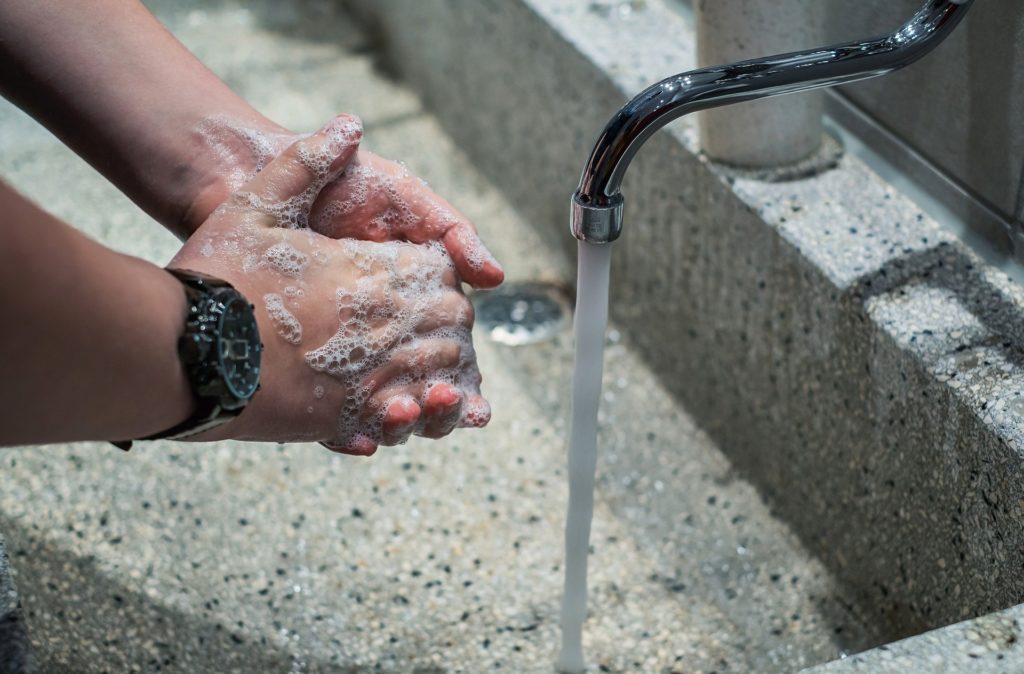4 Tips for a Sanitary Jobsite

Construction can be a dirty job, but it shouldn’t be a germy job. Here’s how to keep your construction sites from contributing to disease spread.
Anxiety over the spread of the novel coronavirus COVID-19 has prompted a surge of communications from businesses to customers about their sanitation processes. In addition to frequent hand-washing and recommendations to cover coughs and sneezes, more frequent and rigorous sanitization of shared-space surfaces has become the norm, and applies to a variety of illnesses, be it COVID-19, influenza, or the common cold.
While these steps seem like common sense, it can be easy to get complacent until a real threat arises. With insight from the Occupational Safety & Health Administration (OSHA), here are four ways you can apply these and other measures to keep your commercial jobsites as sanitary as possible.
- Well-Stocked Handwashing Stations. In line with Centers for Disease Control (CDC) recommendations, OSHA promotes “frequent and thorough hand-washing, including providing workers, customers, and worksite visitors with a place to wash their hands.” Work with site cleaning crews and portable toilet vendors to ensure handwashing stations are fully stocked, and consider adding handwashing or hand sanitizing stations in high-traffic areas, including construction trailers. OSHA says hand sanitizers should be at least 60% alcohol to be effective.
- Cleaning Construction Equipment. Much has been said about sanitizing surfaces, computers, mobile phones, and other high-touch devices, but these may not be the most important tools on your jobsites. Consider adding wipe-down protocols for company trucks, construction vehicles and crane operator cabs, elevators, key cabinets, etc. The CDC indicates that COVID-19 is transmittable through droplets produced when infected individuals cough or sneeze, and can survive for as long as three days on surfaces. If those droplets land on surfaces in shared construction vehicles or operator buttons, the next person to use those spaces could also become sick.
- Refrain from close-quarter meetings. OSHA guidance indicates a medium exposure risk for people whose jobs require frequent or close contact with others (i.e., within 6 feet of other people). While most jobsites can accommodate larger distances between crew members, consider making adjustments during morning meetings, jobsite owner or vendor visits, and meetings that might take place inside a confined space like an office trailer. If your business operates out of an office space as well, consider allowing staff to work from home if possible.
- Communicate with owners and vendors. Remember, your suppliers are also going through their own production, staffing, and supply-chain stresses during this time. OSHA says absenteeism, changes in patterns of commerce, and interrupted supply chain and deliveries are all possible ways that COVID-19 could affect workplaces. Be ready to communicate effectively with building owners, trade partners, and crews about how these challenges could affect production timelines.

As the country takes progressively more conservative steps to help stem the spread of COVID-19, OSHA suggests that workplaces take this time to develop an infectious disease preparedness plan. Steps for creating such a document, and the details it should include, are explained in OSHA’s new document Guidance on Preparing Workplaces for COVID-19. Safety and health programs “can substantially reduce the number and severity of workplace injuries and illnesses, while reducing costs to employers,” the agency says. Business owners can reach out to OSHA for assistance in developing safety management programs, as well as for compliance assistance for programs already in place.
Finally, always be sure to take your infection protocol guidance from reputable sources. The CDC, World Health Organization (WHO), and OSHA are reliable starting points. State and local governments may also enact specific regulations. Use their guidance thoughtfully, follow government directives and be considerate of your staff and colleagues during this change of business. Remember, everyone is in this together.